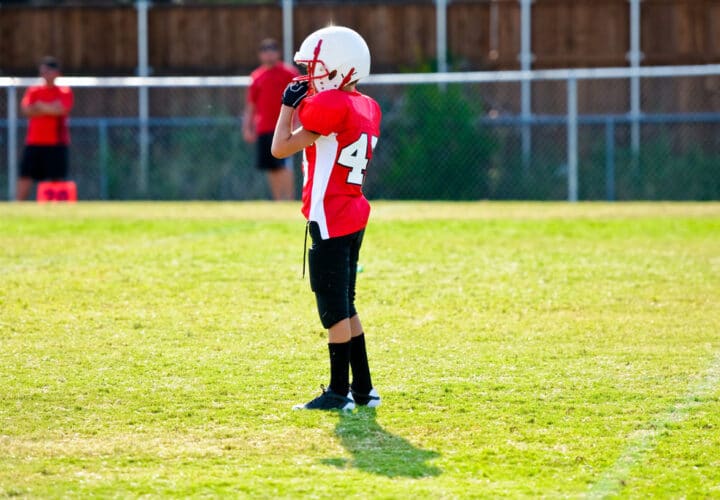How long does a person have to play contact sports like football for concerns like brain damage?
For youngsters around the age of 12, it’s just a single season of youth football, according to recent research from a study out of Wake Forest University in Winston-Salem.
That’s true even for players who have never had a concussion—an instance that experts say could increase the risk of dementia later in life.
For this study, researchers used MRI techniques to analyze nerve spindles in the brains of 26 young players with an average age of 12. The nerve fibers are part of the white matter system that carries information to different areas of the brain.
While requirements for pulling players from the game after a concussion have strengthened in recent years, the researchers point out that not as much consideration is given to those blows to the head that are considered subconcussive—in other words, a hard hit that doesn’t quite reach the threshold of concussion and does not cause the immediate symptoms of concussions. This could be especially important for youth players, said the study authors.
“The years from age 9 to 12 are very important when it comes to brain development,” said study lead author Jeongchul Kim, Ph.D., from Wake Forest School of Medicine in Winston-Salem, N.C. “The functional regions of the brain are starting to integrate with one another, and players exposed to repetitive brain injuries, even if the amount of impact is small, could be at risk.”
Kim said that a collision might create observable changes in the players.
When the researchers compared MRI scans from three months before and after the season, they saw that the corpus callosum, the connector between the two sides of the brain, was altered. Some parts of the corpus callosum expanded and other parts contracted.
“The body of the corpus callosum is a unique structure that’s somewhat like a bridge connecting the left and right hemispheres of the brain,” Dr. Kim said. “When it’s subjected to external forces, some areas will contract and others will expand, just like when a bridge is twisting in the wind.”
The results of the small study show that it’s possible that blows to the head can change the brain during a very important time of development. However, because the study was small and conducted over a short period of time, more research is needed to say for sure if subconcussive hits change the brain early in life.
Ultimately, researchers hope to use this information to develop safer guidelines for youth football.
“It’s best to detect changes at the earliest possible time,” Kim said.



